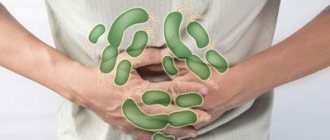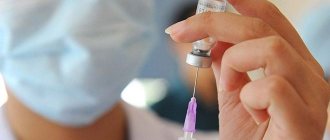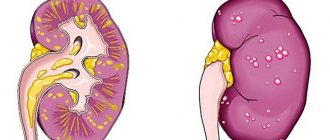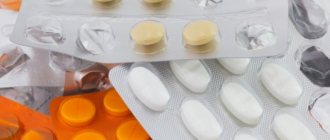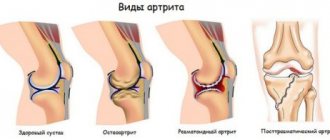Salmonella - causative agents of typhoid fever and paratyphoid fever
The causative agent of typhoid fever, Salmonella typhi, was first discovered
discovered in 1880 by K. Ebert in the organs of people who died from typhoid fever. Later, in patients who had a clinical picture of typhoid fever, bacilli were found that differed in biochemical and serological properties from the typhoid bacilli. They were called by G. Schottmuller paratyphoid bacilli A and B. Their modern names are: Salmonella paratyphi A, Salmonella paratyphi B (schottmuelleri).
Morphology, cultural biochemical properties. Salmonella typhoid and paratyphoid are short rods with rounded ends, on average 1-2 microns in length. All of them are motile (peritrichous) and do not form spores or capsules. Gram negative.
Facultative anaerobes. They grow well on simple nutrient media, at pH 7.2-7.4, growth optimum at 37°C. The elective environment for them is media containing bile, which prevents the growth of E. coli and other bacteria.
The enzymatic properties of Salmonella are used to determine the species (Table 5). Unlike Escherichia, Salmonella do not ferment lactose and sucrose , they ferment glucose and mannitol , and typhoid bacilli only to acid, and paratyphoid bacilli to acid and gas. Paratyphoid bacillus A, unlike paratyphoid bacillus B, does not produce hydrogen sulfide.
Antigens. Salmonella contains O-antigens, H-antigens and K-antigen. Identification is based on antigenic structure according to the classification developed by Kaufman and White (Table 6). According to this scheme, all Salmonella are divided into groups according to O-antigens: A, B, C, D, E, etc. each group has a specific O-antigen (for example, in group D it is O9). Some groups share O antigens (for example, groups F, B and D share the O12 antigen). S. typhi, its virulent strains, contain a Vi antigen, which is located more superficially than the O antigen. Salmonella H-antigens are divided into phases I and II. According to phase I (specific) within groups, Salmonella are divided into species.
Using the Kaufman-White scheme, the types of salmonella are determined: using monoreceptor O-sera, the group to which the isolated salmonella culture belongs is determined, and the species is determined using H-sera. Table 7.
+
SCHEME OF ANTIGENIC STRUCTURE OF SALMONELLA (according to KAUFMAN-WHITE)1
| Group | Name of bacteria | Antigens | ||
| somatic | flagellate | |||
| first phase (specific) | second phase (nonspecific) | |||
| A BCDE | S. paratyphi A S. scottmuelleri S. typhimurium S. heidelberg S. reading S. cholerae suis S. paratyphi C S. newport S. typhi S. enteritidis S. dublin S. moscow S. anatum S. london S. cambridge | 1, 2, 12 1, 4, 5, 12 1, 4, 5, 12 4, 5, 12 4, 12 6, 7 6, 7, Vi 6, 8 9, 12, Vi 9, 12 1, 9, 12 9, 12 3, 10 3, 10 3, 15 | abire, hcje, hdg, mg, pg, qe, hl, ve, h | — 1, 2 1, 2 1, 2 1, 5 1, 5 1, 5 1, 2 — — — — 1, 6 1, 6 1, w |
1 Printed in abbreviated form.
Pathogenicity factors. Salmonella do not produce exotoxin; they contain endotoxin, which is released during their death or destruction. Their pathogenicity is also associated with the ability to penetrate cells and multiply in them (invasiveness).
Sustainability. The causative agents of typhoid-paratyphoid infections are relatively stable in the external environment. In the water of open reservoirs, in the soil where they fall with human feces, they can persist for 1-3 months, on vegetables and fruits for 5-10 days, in ice - up to 2 months. At 50°C they die within an hour, at 100°C - immediately. Disinfectants kill them within minutes.
Diseases in humans. Only humans suffer from typhoid fever. The source of infection is sick people and bacteria carriers. The mechanism of infection is fecal-oral. Pathogens enter through the mouth, enter the small intestine, and multiply in the lymphatic tissues of the small intestine. This occurs during the incubation period, which lasts on average 10-14 days. Then the bacteria penetrate the blood, bacteremia occurs - the beginning of the disease. With the bloodstream they are carried throughout the body, penetrating into the liver, spleen, kidneys, and bone marrow. The bacteria are destroyed and endotoxin is released, causing intoxication. Getting from the liver to the gallbladder, the pathogens find here favorable conditions for reproduction and, together with bile, in the third week of the disease they again enter the intestines, into the lymphatic formations. As a result of the repeated introduction of bacteria into already sensitized lymphatic tissues, allergic inflammation develops, leading to necrosis and the formation of ulcers. This can lead to dangerous consequences: bleeding from ulcers and intestinal perforation. At this time, Salmonella is excreted from the body in feces and urine.
In some patients, pathogens can be found in stool and urine after recovery for several months and sometimes years. The bacteria are stored in their gallbladder, from where they occasionally enter the intestines and are excreted in the feces, and in some carriers, they are excreted through the kidneys in the urine.
Bacteria carriers pose a danger to others as a possible source of infection.
Immunity. During illness, antibodies are produced, the titer of which increases from the second week of illness. Antibodies promote the lysis of bacteria and enhance phagocytosis. Antibody detection is used for diagnosis. The occurrence of relapses of the disease and bacterial carriage is explained by a lack of immunity.
Microbiological diagnostics. In the first week of the disease, blood is taken to isolate a blood culture. In compliance with the rules of asepsis, 10 ml of blood is taken from the ulnar vein, inoculated in 100 ml of bile broth, and sent to the laboratory. The isolated pure culture (hemoculture) is identified by morphology, biochemical properties and antigenic structure, and the phagovar is determined.
Starting from the third week of the disease, the pathogen is isolated from feces, urine, and bile.
Antibodies are determined in the blood serum, the titer of which increases towards the end of the first - beginning of the second week of the disease. They perform the Vidal agglutination test, RNGA with erythrocyte diagnostic tests, and ELISA.
To identify bacterial carriage, feces, urine, and bile are examined to detect the causative agent; In order to detect the Vi antigen, RNGA is performed with an erythrocyte Vi diagnosticum.
Preventive and therapeutic drugs. Mass vaccination is not carried out, since the incidence is sporadic. There is a chemical typhoid vaccine containing O-antigen (used according to indications), and a therapeutic killed typhoid (alcohol) vaccine enriched with Vi-antigen. Persons who have been in contact with the patient are prescribed typhoid bacteriophage. The most commonly used antibiotic is chloramphenicol.
Salmonella - causative agents of gastroenterocolitis (salmonellosis)
Salmonella most often causes foodborne illnesses. Recently, nosocomial salmonellosis has been described, the causative agents of which are “hospital” strains of salmonella.
Salmonella - causative agents of food toxic infections
Foodborne illnesses are acute intestinal diseases resulting from eating food contaminated with Salmonella. The causative agents are non-typhoidal Salmonella. According to the Kaufman-White scheme, about 700 serovars are known to cause gastroenterocolitis, most often these are S. typhimurium, S. enteritidis, S. heidelberg, S. choleraesuis, S. anatum, S, infantis. They are relatively resistant to external factors and are able to multiply in food products. Salting and smoking does not kill them. Most Salmonella pathogens for humans cause disease
diseases in animals (pets and birds, rodents).
Disease in humans. Most often, the disease is associated with eating meat from cattle, chickens and eggs. Meat can be infected during the life of a sick animal or after slaughter, during cutting of the carcass, storing meat and preparing and storing ready-made dishes. Most often these are meat, dairy products, as well as confectionery products containing eggs that have not been heat-treated.
For the occurrence of the disease, the amount of salmonella that enters the stomach with food is important. When they die en masse, endotoxin is released, which enters the blood and causes intoxication within a few hours after eating. In some cases, Salmonella enters the bloodstream, causing short-term bacteremia.
The development of the disease is associated with the action of the pathogens themselves and their endotoxin, that is, it is a toxic infection. Main symptoms: abdominal pain, nausea, vomiting, frequent loose stools, chills, increased body temperature. The disease lasts no more than 4-5 days. Pathogens quickly disappear from the blood and intestines. Persons around the patient do not become infected.
Immunity. Antibodies are detected in the blood of patients and convalescents, and this can be used for diagnosis. Immunity is not created after the disease has been suffered.
Microbiological diagnostics. The materials to be tested are vomit, gastric lavage, feces, urine, blood, and leftover food consumed by the sick. Bacteriological studies are carried out, the isolated pure culture is identified by morphology, biochemical properties and antigenic structure in accordance with the Kaufman-White scheme using monoreceptor sera.
Antibodies are determined in blood serum using an agglutination reaction with a pathogen isolated from the test materials and with standard diagnosticums, as well as RNGA with erythrocyte diagnosticums. An increase in antibody titer in paired blood sera taken on the first day of the disease and in the second week has diagnostic significance. Salmonella - causative agents of nosocomial infections
The causative agents of nosocomial salmonellosis are
“hospital” strains of salmonella, most often Salmonella typhimurium. Unlike “wild” (natural) strains of the same species, they do not cause death in mice when infected through the mouth, but are more pathogenic for humans, and are multidrug resistant due to the presence of R-plasmids. “Hospital” strains were also found among S. enteritidis.
Disease in humans. The source of infection is sick people. The spread of nosocomial salmonellosis occurs through household contact, airborne dust and food.
Manifestations of the disease are varied: asymptomatic carriage of bacteria, mild forms, severe intestinal disorders with intoxication, bacteremia, and sometimes with septic complications. The disease is especially severe in young children.
Microbiological diagnostics. Feces and blood are examined. Isolated pure cultures are identified by morphology, biochemical properties, and antigenic structure.
Prevention and treatment. It is necessary to comply with the sanitary and hygienic regime in medical institutions and catering establishments; identification of salmonella carriers and their sanitation. For the purpose of emergency prevention of nosocomial infection, polyvalent Salmonella bacteriophage is prescribed to children who have been in contact with patients and carriers, as well as to mothers.
Antibacterial drugs (chlorevomycetin, ampicillin) are used to treat patients with generalized forms of salmonellosis.
How resistant are bacteria?
Salmonella typhimurium is resistant to various environmental factors:
- They are stored at room temperature with household items for three months.
- They are stored for four years in dry animal feces.
- Five months - in water, six months - in dairy products and meat, on eggshells - up to a month.
- Death occurs only at 100°C. In meat products, resistance to high temperatures increases (half a kilo of meat must be boiled for two hours, only then will it be safe). Salting and smoking will not kill salmonella.
- This pathogen can withstand temperatures down to -80°C.
- It is UV resistant.
- The disinfectant needs to sit for 20 minutes to kill the bacteria.
Outbreaks of salmonellosis occur in the summer and are more often diagnosed in young children due to the imperfection of their immune system.
The pathology is transmitted through nutritional means, as well as through contact and household contact. By the way, when eating eggs, it is important to pay attention to the type of white and yolk. If there is cloudiness, hemorrhage, or a rotten smell, the egg is most likely infected. It needs to be thrown away, the dishes should be filled with chlorine, and your hands should also be treated with it. Soap does not help in these cases.
Winter outbreaks, high mortality and household contact transmission occur for reasons of antibiotic resistance and due to the fact that food supply is centralized.
Salmonella typhimurium - laboratory diagnostics
The following indicators influence the diagnosis:
- increased ESR;
- leukocytes with a shift to the left;
The pathogen is detected from biological media (feces, blood, urine, affected organs) and suspicious products using the bacteriological method. The final result is usually ready by the fifth day.
When infected with Salmonella typhimurium, the symptoms are as follows:
- fever;
- chills;
- severe diarrhea;
- vomit.
Incubation period
The incubation period lasts from six hours to eight days, but most often the first symptoms appear within the first day or two after eating the contaminated product.
There is a disturbance in water-salt metabolism due to diarrhea, the stool becomes watery, foamy, foul-smelling, green, reminiscent of “swamp mud”, with a frequency of up to ten times a day, for a week or more.
The disease begins acutely and is characterized by weakness, lethargy, and moderate pain in the abdomen (epigastric and navel areas). The abdomen is painful on palpation, rumbling is heard and swelling is noticeable.


